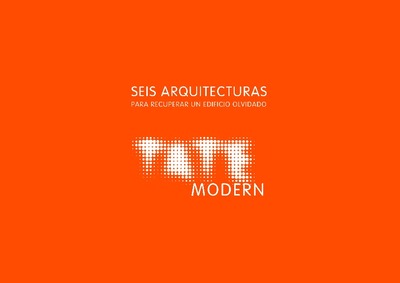|
Resumen:
|
[ES] La ciudad de Londres se extendía históricamente en el lado norte del río Támesis, y no fue hasta el siglo XVIII, con el desarrollo de la Revolución Industrial, cuando comenzó a colonizarse la ribera Sur con numerosas ...[+]
[ES] La ciudad de Londres se extendía históricamente en el lado norte del río Támesis, y no fue hasta el siglo XVIII, con el desarrollo de la Revolución Industrial, cuando comenzó a colonizarse la ribera Sur con numerosas fábricas y almacenes. Uno de los edificios que se construyeron en Bankside fue la central eléctrica diseñada por Sir Giles Gilbert Scott. Situado junto al río frente a la catedral de San Pablo, fue ejecutado en dos fases entre 1947 y 1963. Por falta de rentabilidad, sin embargo, la fábrica fue cerrada en 1981.
En 1992 Tate Gallery, entidad que reúne el grupo de museos Tate, anunció la idea de crear una nueva galería especializada en arte moderno. Dos años más tarde, convocó a tal efecto un concurso internacional de ideas para transformar la antigua central de energía de Gilbert Scott en uno de los museos más importantes a nivel mundial de arte moderno. De los 148 proyectos presentados resultaron seleccionados seis para la fase final, entre los que se encontraban las propuestas de los siguientes estudios de arquitectura: David Chipperfield, Rem Koolhaas, Renzo Piano, Tadao Ando, Rafael Moneo, y Herzog & de Meuron, quien finalmente resultó ganador del concurso en 1995. Actualmente, el Tate Modern de Londres puede ser considerado como un ejemplo para futuros proyectos de regeneración por su indudable éxito en su papel de recuperar un edificio histórico de origen industrial y revitalizar una zona degradada de Londres, colocándose al nivel de otros hitos históricos que definen e identifican la ciudad.
Por consiguiente, se propone un análisis pormenorizado de los diferentes parámetros compositivos de las seis propuestas finalistas del concurso, así como un estudio comparativo que nos permita entender la arquitectura de cada autor y los diferentes puntos de vista para abordar un mismo objetivo arquitectónico. Para ello, se utilizarán los conocimientos y destrezas adquiridas a lo largo de la carrera, principalmente en el ámbito de la composición arquitectónica, pero también en el área proyectual, constructiva e incluso estructural. Como fuentes de información se utilizará el material de archivo inédito localizado en la biblioteca Tate, la experiencia propia al visitar el edificio construido y la bibliografía específica sobre la intervención y los arquitectos finalistas.
[-]
[EN] The City of London stretched historically on the north side of the River Thames. It was not until the 18th Century, due to the development of the Industrial Revolution, when the South Bank began to be colonized by ...[+]
[EN] The City of London stretched historically on the north side of the River Thames. It was not until the 18th Century, due to the development of the Industrial Revolution, when the South Bank began to be colonized by many factories. One of these industrial buildings was Bankside Power Station, designed by Sir Giles Gilbert Scott. It is located on the bank of Thames River, facing St. Paul's Cathedral. It was built in two stages between 1947 and 1963. Due to the lack of profitability the power station was closed in 1981.
In 1992 Tate Gallery, institution formed by the different Tate museums, announced the idea of creating a new gallery specialized in modern art. Two years later, it was convened an international competition to transform the abandoned Bankside Power Station into one of the most important museums in the world of modern art. Of the 148 projects submitted, six finalist were selected which were the proposals of the following studies of architecture: David Chipperfield, Rem Koolhaas, Renzo Piano, Tadao Ando, Rafael Moneo, and Herzog & de Meuron, who finally won the competition in 1995. Currently, the Tate Modern can be considered as an example for future regeneration projects for its undoubted success recovering a historical industrial building and revitalizing a deprived area of London, keeping up with other historical landmarks that define and identify the city.
Therefore, not only is it proposed a detailed analysis of the six finalist proposals considering different compositional parameters, but also a comparative study in order to understand each author¿s architecture and their different viewpoints to address the same architectural goal. To this end, there is need to use the knowledge and skills acquired over our years as a student, mainly in the field of architectural composition, additionally in the project area, constructive and even structural. As research sources there will be used the unpublished documents found in the Tate library¿s archive showcase, besides our own experience visiting the building and the specific bibliography about the museum and the finalist architects.
[-]
|







